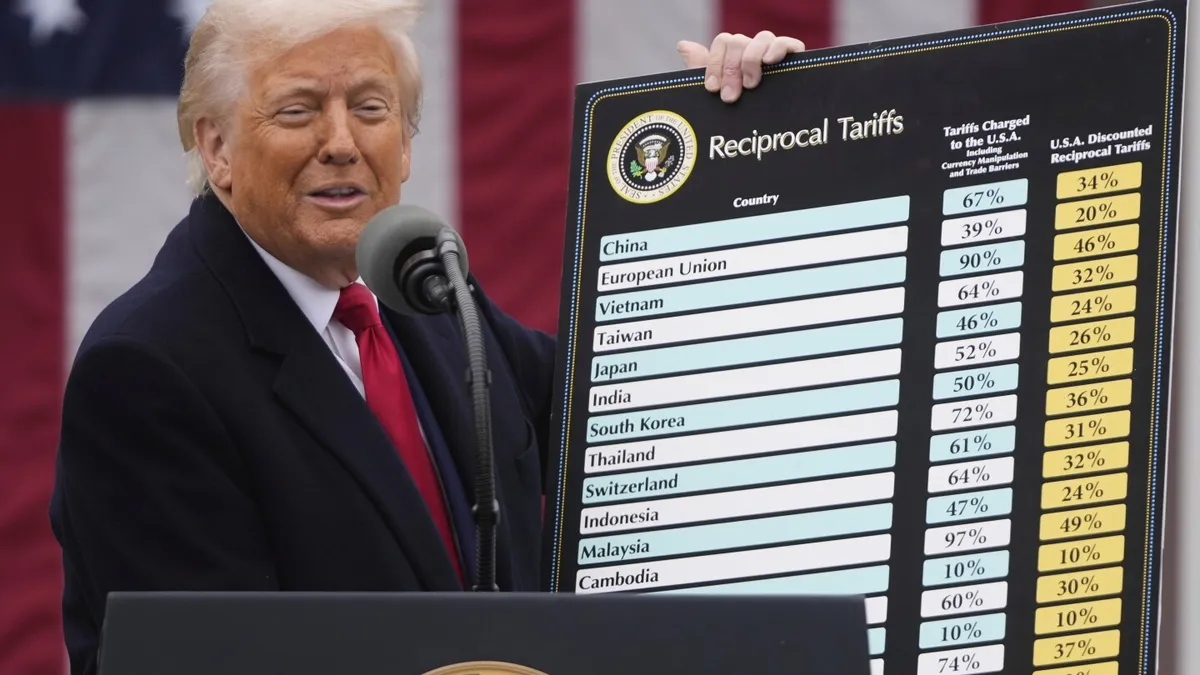
The Trump administration is ramping up pressure on its trading partners to finalize new deals before a looming Wednesday deadline. Starting Monday, the United States will begin sending out letters to various countries, warning them that higher tariffs could be implemented as early as August 1. This move adds to the growing uncertainty faced by businesses, consumers, and international trading partners, raising questions about which nations will be notified, whether any changes will materialize in the coming days, and if President Donald Trump will once again delay the imposition of these rates.
Trump and his top trade advisers indicate that while they could extend the negotiation period, the administration is committed to applying maximum pressure on other nations to secure favorable trade agreements. Kevin Hassett, director of the White House National Economic Council, stated during an appearance on CBS’ “Face the Nation” that President Trump would ultimately decide when to abandon negotiations. “The United States is always willing to talk to everybody about everything,” Hassett remarked. “There are deadlines, and there are things that are close, so maybe things will push back past the deadline or maybe they won’t. In the end the president is going to make that judgment.”
The steep tariffs announced by Trump on April 2 threatened to disrupt the global economy and potentially lead to wider trade wars. Following a week of turmoil in financial markets, the administration suspended most of these higher import taxes for 90 days, just as they were set to take effect. The current negotiating window, which extends until July 9, has yielded only limited agreements, particularly with the United Kingdom and Vietnam.
Trump's elevated tariffs target numerous nations that maintain significant trade surpluses with the U.S., alongside a 10% baseline tax on imports from all countries, which he justified as a response to an economic emergency. Additionally, there are separate tariffs of 50% on steel and aluminum imports, along with a 25% tariff on automobiles.
As the deadline approaches, Trump indicated on Friday that letters detailing the tariff rates for countries failing to reach trade agreements could be dispatched as early as Saturday, although the U.S. would not begin collecting these taxes until August 1. On Sunday, he reiterated his plans to send out letters starting Monday, estimating that they may involve “could be 12, could be 15” foreign governments.
“We’ve made deals also,” Trump stated before returning to the White House from New Jersey. “So we’ll get to have a combination of letters, and some deals have been made.” However, Trump and his advisers have not disclosed which countries will receive these letters.
Treasury Secretary Scott Bessent emphasized that August 1 should not be viewed as a new deadline, stating during an interview on CNN’s State of the Union, “We’ll see. I’m not going to give away the playbook.” Bessent mentioned that the U.S. is “close to several deals” and predicted that significant announcements would come in the following days, though he provided no specifics.
Trump recently announced a deal with Vietnam, allowing U.S. goods to enter the country duty-free, while Vietnamese exports to the U.S. would face a 20% levy. This marks a reduction from the 46% tax he previously proposed on Vietnamese imports, part of his strategy to establish reciprocal tariffs with countries where the U.S. has a trade deficit.
When asked about potential deals with the European Union or India, Trump expressed that “letters are better for us” due to the involvement of multiple countries. He explained, “We have India coming up and with Vietnam, we did it, but much easier to send a letter saying, ‘Listen, we know we have a certain deficit, or in some cases a surplus, but not too many. And this is what you’re going to have to pay if you want to do business in the United States.”
However, Canada will not be among the countries receiving letters. Trump’s ambassador, Pete Hoekstra, confirmed that trade talks between the U.S. and Canada are ongoing and that they are working towards a comprehensive deal. “Canada is one of our biggest trading partners,” Hoekstra said in an interview. Canadian Prime Minister Mark Carney has indicated a desire to finalize a new agreement by July 21, or else Canada may implement countermeasures in trade.
Hoekstra refrained from committing to a specific timeline for a trade agreement, noting that even with a deal, Canada might still be subject to some tariffs. “But we’re not going to send Canada just a letter,” he concluded.
As trade negotiations continue to unfold, the global economic landscape remains uncertain, with both opportunities and challenges for U.S. trade relations on the horizon.